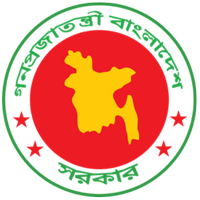Vaccinating Every Child: Promising Strategies for Reaching Zero-Dose Children in Bangladesh
In the global quest for immunisation equity, Bangladesh has emerged as a beacon of innovation and commitment. On June 13, 2024, the Zero-Dose Learning Hub hosted a pivotal webinar highlighting promising strategies to reach zero-dose (ZD) and under-immunised (UI) children, particularly those in hard-to-reach areas. Immunisation experts from Bangladesh and Nigeria shared their experiences, shedding light on the challenges and solutions in the field.
The rapid assessment conducted by the Bangladesh Country Learning Hub (CLH) underscored the presence of ZD and UI children across various regions. Key reasons for this include migration, misconceptions about the Expanded Program on Immunization (EPI), river erosion, seasonal harvesting, inadequate interpersonal communication, overburdened health workers, and logistical issues such as high transportation costs and vaccine supply delays. These findings set the stage for an ambitious Implementation Research (IR) initiative aimed at tackling these barriers.
Hemel Das, Senior Statistical Officer at the International Centre for Diarrheal Disease Research, Bangladesh (icddr,b), elaborated on the IR study, which employs a quasi-experimental pre-post design across six diverse regions. Each intervention area has a corresponding comparison area to evaluate the effectiveness of the strategies implemented.
Selected Areas for Implementation Research:
- Haor (Wetlands): Sunamganj – Dowarabazar (Intervention) and Jamalganj (Comparison)
- Char (Sandy/Silty Lands): Gaibandha – Saghata (Intervention) and Phulchari (Comparison)
- Coastal Land: Noakhali – Hatiya (Intervention) and Subarnachar (Comparison)
- Hilly Land: Rangamati – Kawkhali (Intervention) and Rangamati Sadar (Comparison)
- Plain Land: Sherpur – Nalitabari (Intervention) and Sreebardi (Comparison)
- Urban Slums: Dhaka North City Corporation Zone 05, Wards 26 & 30 (Intervention) and Zone 05, Ward 33 (Comparison)
To design effective interventions for reaching zero-dose (ZD) and under-immunised (UI) children, a comprehensive approach was taken. Initially, evidence-based interventions suited for hard-to-reach areas were identified. These interventions were then shared and refined through consultations with key immunisation stakeholders. Adjustments were made based on feedback from in-person meetings and rapid assessment seminars. Employing a human-centered design approach, the project sought to understand the drivers of non-vaccination within families. This process led to the development of tailored, area-specific interventions for each region.
The IR study aims to tackle major barriers like lack of information, inadequate interpersonal communication, misconceptions, and resource limitations. Using tools like the EPI Tracker and e-screening checklists, and involving community leaders and NGO workers, the project strives to improve vaccination rates among ZD children. The IR study will conduct both impact and process evaluations. Surveys before and after interventions will compare results in intervention and comparison areas, while process evaluations will involve field observations, key informant interviews, and focus group discussions with frontline healthcare providers.
Since December 2023, the IR has been operational within the Ministry of Health and Family Welfare’s existing system. Key lessons highlight the importance of stakeholder involvement and human-centered design in creating effective interventions. By addressing the unique challenges faced by different regions, Bangladesh is making significant strides towards ensuring every child receives life-saving vaccines, setting an example for other countries aiming to achieve immunisation equity.
Source:
Gavi Zero-Dose Learning Hub [@GaviZDLH]. (2024, June 13). Vaccinating every child: Promising strategies for reaching zero-dose children (part 1 of 2). Youtube. https://www.youtube.com/watch?v=4cpfFXEDD2c









